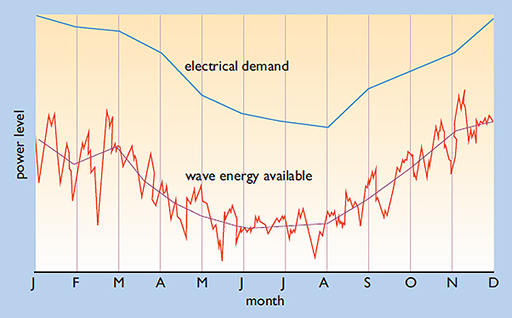6 Grid integration of wave energy
The electrical output from a wave energy scheme can be used locally, but it is much more likely that the electricity will be fed into a grid.
When the electrical outputs of several wave energy units are added together, the total output will be generally smoother than for a single unit. If we extend this to an array of several hundred floating devices, then the summed output will be smoother still. In addition, any fluctuations in output will be less important if the electricity is to be delivered to large national systems like those of the UK, where in most locations the grid is ‘strong’ enough to absorb contributions from a fluctuating source.

Although there are short-term fluctuations on second or minute scales, the wave resource also varies on a day-to-day and season-by season basis. For countries in the north-east Atlantic such as the UK, Ireland, Spain and Norway, the seasonal variation shown in Figure 20 demonstrates that wave power output reaches a maximum in the bad weather of winter when the electrical demand is greatest.
That’s about it for this week. You’ll finish with a quick summary of what you’ve learned.
